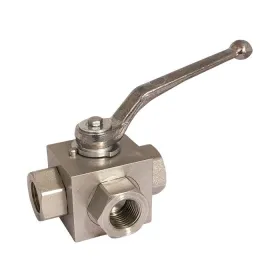
Safety and security and also performance are top considerations when using hydraulic hose. To assure performance and also avoid potential risks in the work environment, proper setup is critical. A secure workplace and desired performance both need appropriate hydraulic hose directing, and these handy installation pointers are one method to guarantee efficiency and also aid avoid early hose failure.
Do Not Exceed Minimum Bend Radius
Use tools to avoid exceeding the minimum bend radius. Bending hose beyond the recommended bend radius places excessive stress on hose reinforcement can create large holes between strands of hose reinforcement, and severely reduces the hose's pressure capacity. Exceeding the minimum bend radius can result in a burst hose. The minimum bend radii for each hose is stated in the hose tables in the catalog.
Allow for Slack
Use tools that provide enough slack to allow for changes in length to occur when hose is pressurized. Hydraulic hose is capable of elongating up to 2% or contracting up to 4%, depending on construction. The hose length must be determined so that the hose assembly has enough slack to allow the system components to move or vibrate without creating tension in the hose. The service life of hose is reduced if hose assemblies do not permit adequate flexing and allow for length changes due to expansion or contraction. When pressurized, a hose that is too short may stress the hose fitting connections or pull loose from its fittings, causing premature metallic or seal failures. It is important not to allow too much slack and therefore introduce the risk of the hose snagging on other equipment or rubbing on other components.
Use Elbow Fittings or Adapters When Necessary
A general rule of thumb for hose installation is if the hose needs to bend immediately before the metal fitting, you should keep it straight for at least twice the outside diameter (O.D.). If that’s not possible, use a 90 or 45-degree elbow fitting. This prevents fluid under pressure, traveling at high speeds, from directly impacting the core tube, which can deteriorate the hose and cause premature failure. Adapters ease port connections and hose installation and can be used to change thread configuration. Adapters should be used sparingly to keep assembly components at a minimum to avoid longer assembly time and cost, and prevent potential leak points in hose assembly.
Avoid Twisting the Hose
Avoid placement that requires twisting the hose during installation, as it misaligns the reinforcement and reduces a hose’s capacity to withstand pressure. A simple way to identify twisting is to look at the layline, which is the continuous line of information printed on a hose with the part number, pressure, etc. If the layline is twisted like a candy cane, it means that the hose was twisted during installation, which can cause premature hose failure.
The Plane of Movement Must be Considered
Be sure to route high-pressure hydraulic hose parallel to machine contours using elbows or adapters. This decreases the length of hose lines and reduces hard angle bends that restrict flow and strain the hose, saving money and maximizing hose capability.
Avoid Abrasive Influences
Avoid placing hose near any object with sharp or abrasive surfaces, or too close to other hoses as direct surface contact with equipment components, hoses, or material in the operating environment will cause abrasive wearing of the outer cover, risking exposure of the reinforcement. However, if the application is such that contact cannot be avoided, either a hose with a higher abrasion resistant hose cover or a protective sleeve should be used. Parker ToughCover (TC) or SuperTough (ST) covers offer 80 times and 450 times respectively the abrasion resistance of standard rubber covers.
There is a Right and Wrong Way to Clamp Hoses
Keep in mind the mechanical movement and vibration of hose when bundling. Crossing or clamping high- and low-pressure hoses together can lead to wear in the hose covers, decreasing productivity and risking safety hazards. Correct clamping should be exercised to securely route the hose and avoid the hose contacting surfaces that will cause the hose damage. If hose follows a compound bend, it should be coupled into separate segments or clamped into segments that flex on a single plane.
Do Not Mix Hoses and Fittings
To ensure maximized service life and safe function, do not mix and match hoses and fittings from different manufacturers. It is vital to work capability and safety that the hose and fitting manufacturer are the same, and that the assembly uses the recommended equipment, parts, and procedures as per the manufacturer. Correct fittings can avoid unnecessary strain on the hose, excess length, or multiple threaded joints.
Plan for Future Maintenance
Few things are more aggravating that having to take apart adjoining assemblies to access a specific hose that needs maintenance. Avoid this scenario by using different combinations of hose ends and tube fittings, such as short and long straights, or short and long elbows. Taking this step when installing a hose reduces maintenance effort and downtime. Avoid unnecessary hose strain by utilizing elbows and adapters for ease of routing. These tools help to relieve strain on the assembly and allow for clean, accessible installations. Inspection and maintenance might be necessary, so prohibitive design routings of hose assemblies should be avoided.
Temperature Directly Affects Hose Life
Keep hydraulic hoses away from external heat sources, as high ambient temperatures shorten hose life. Temperature increases of can lead to cracking and shorten hose life. The more extreme the ambient temperature is, weather hot or cold, the more durable the hose cover needs to be. Another option would be installing sleeves, which can help protect hose from hot equipment parts and other high temperature sources that are potentially hazardous.
We are a Hydraulic Hoses supplier, please feel free to contact us if you need them!





